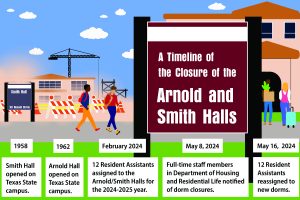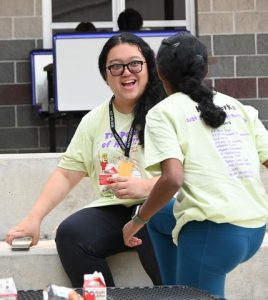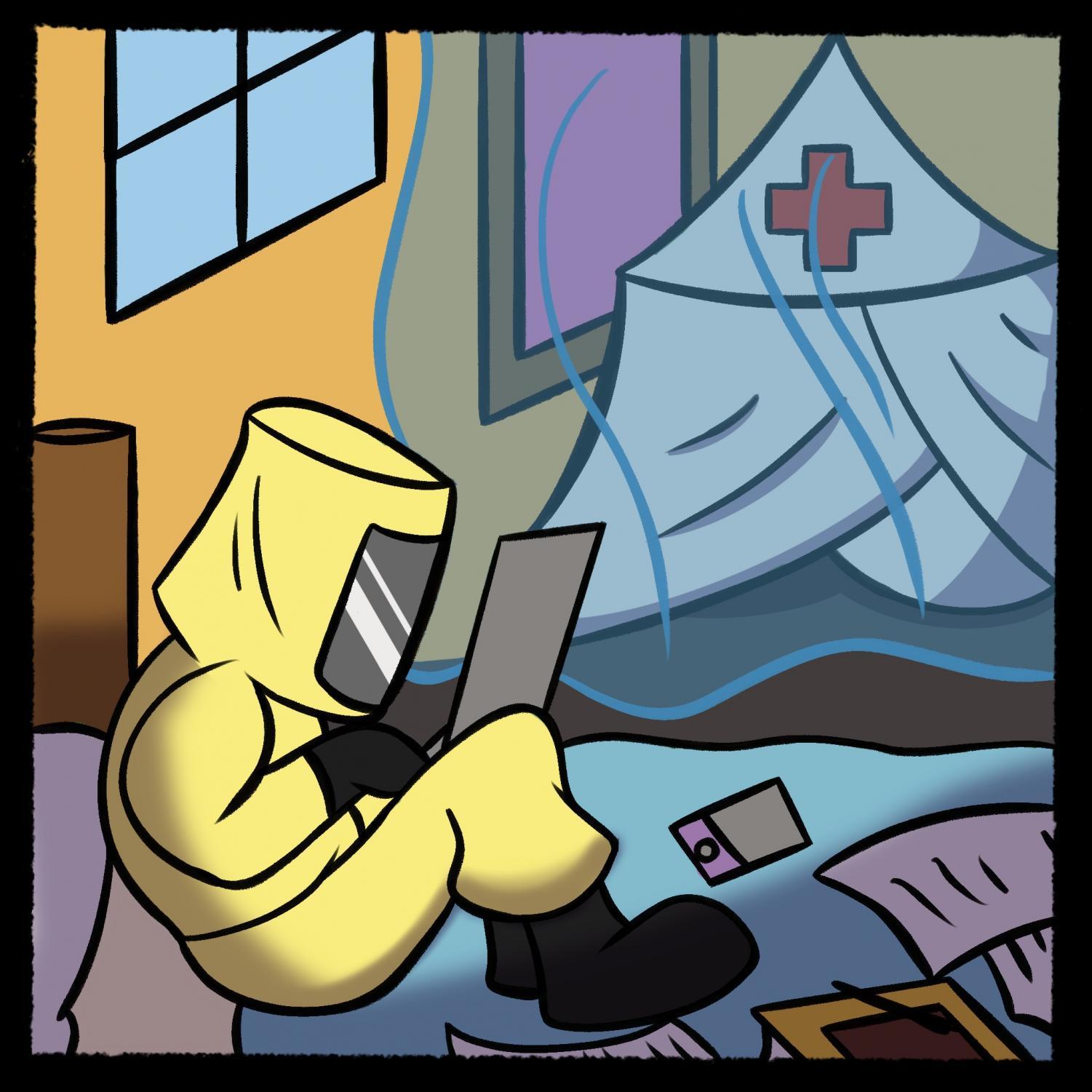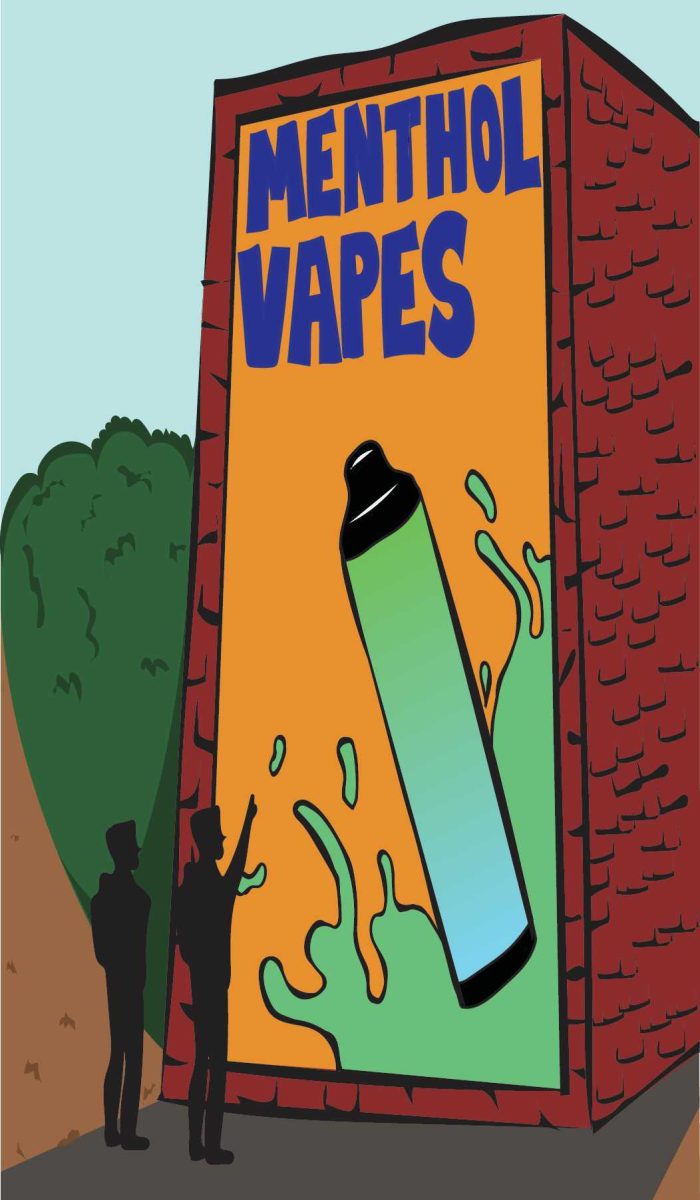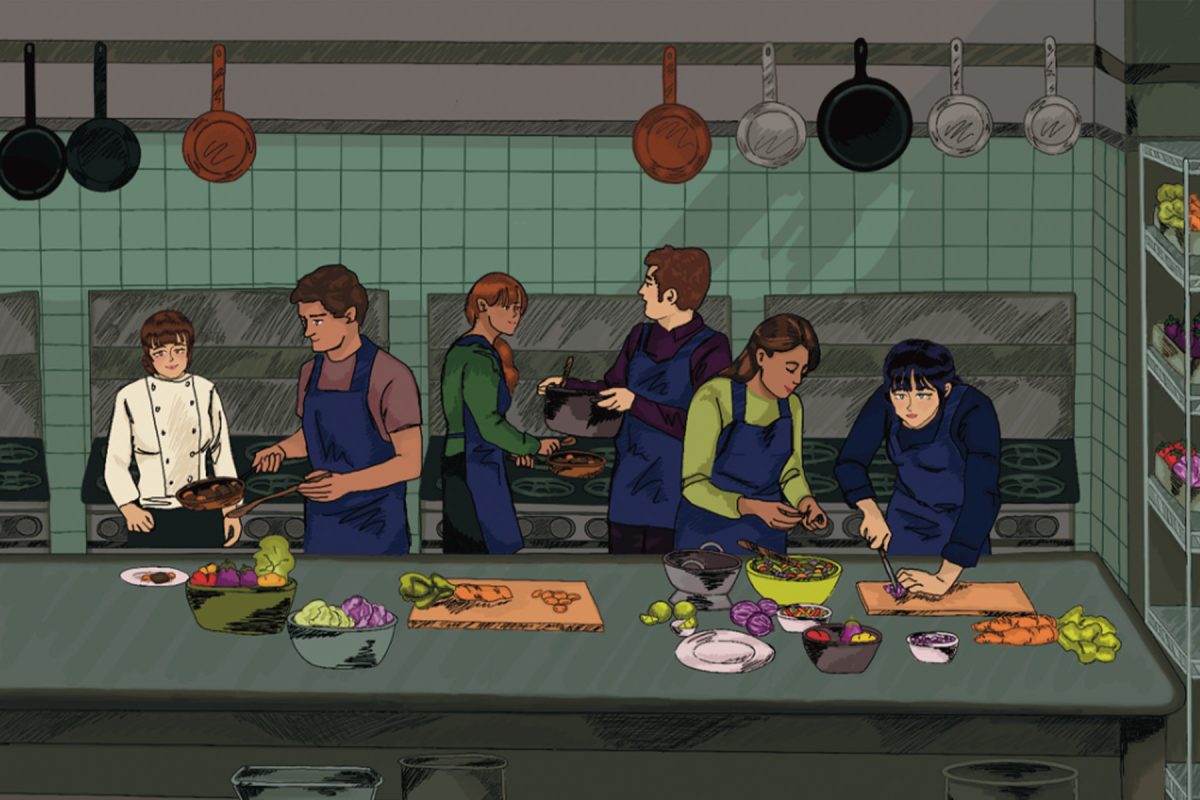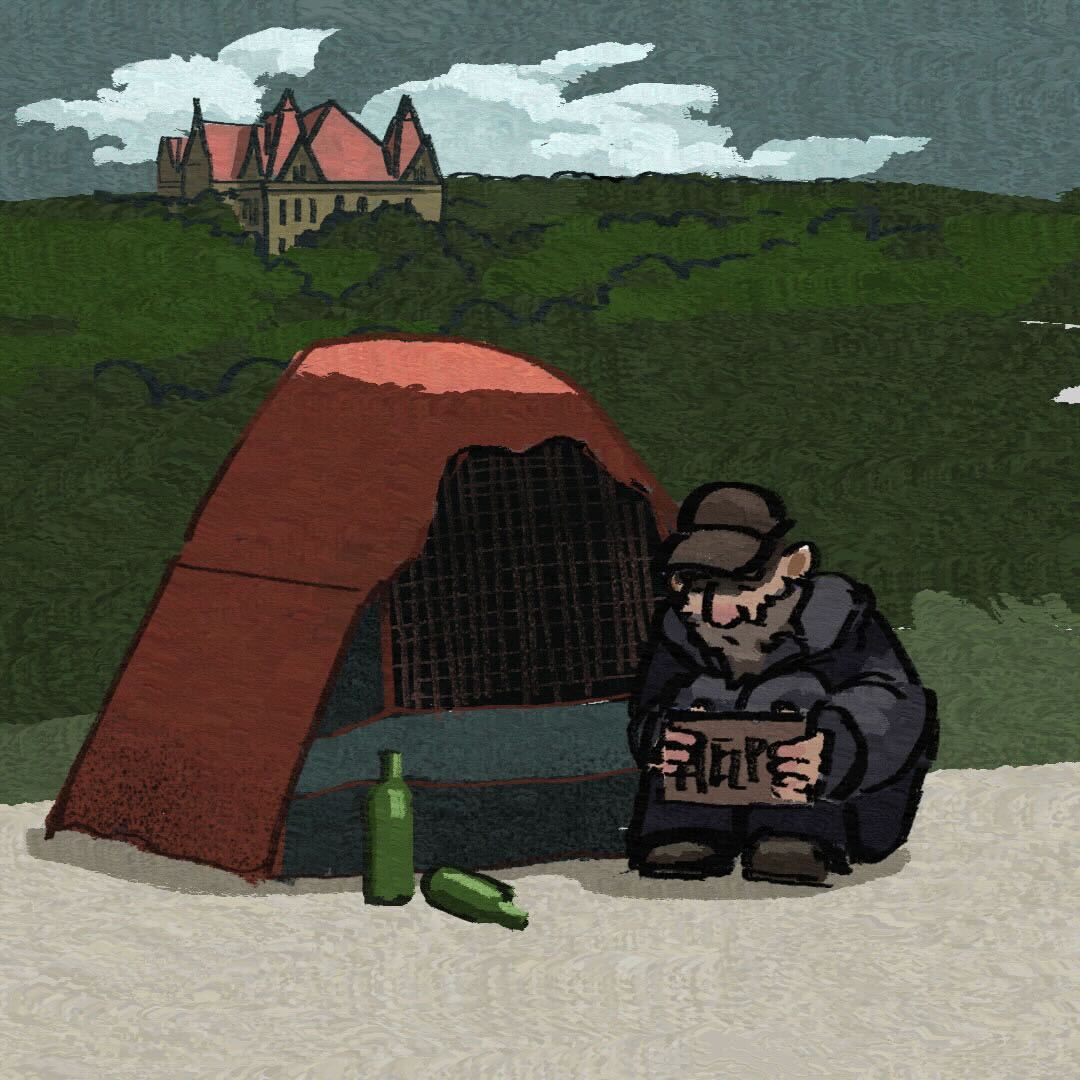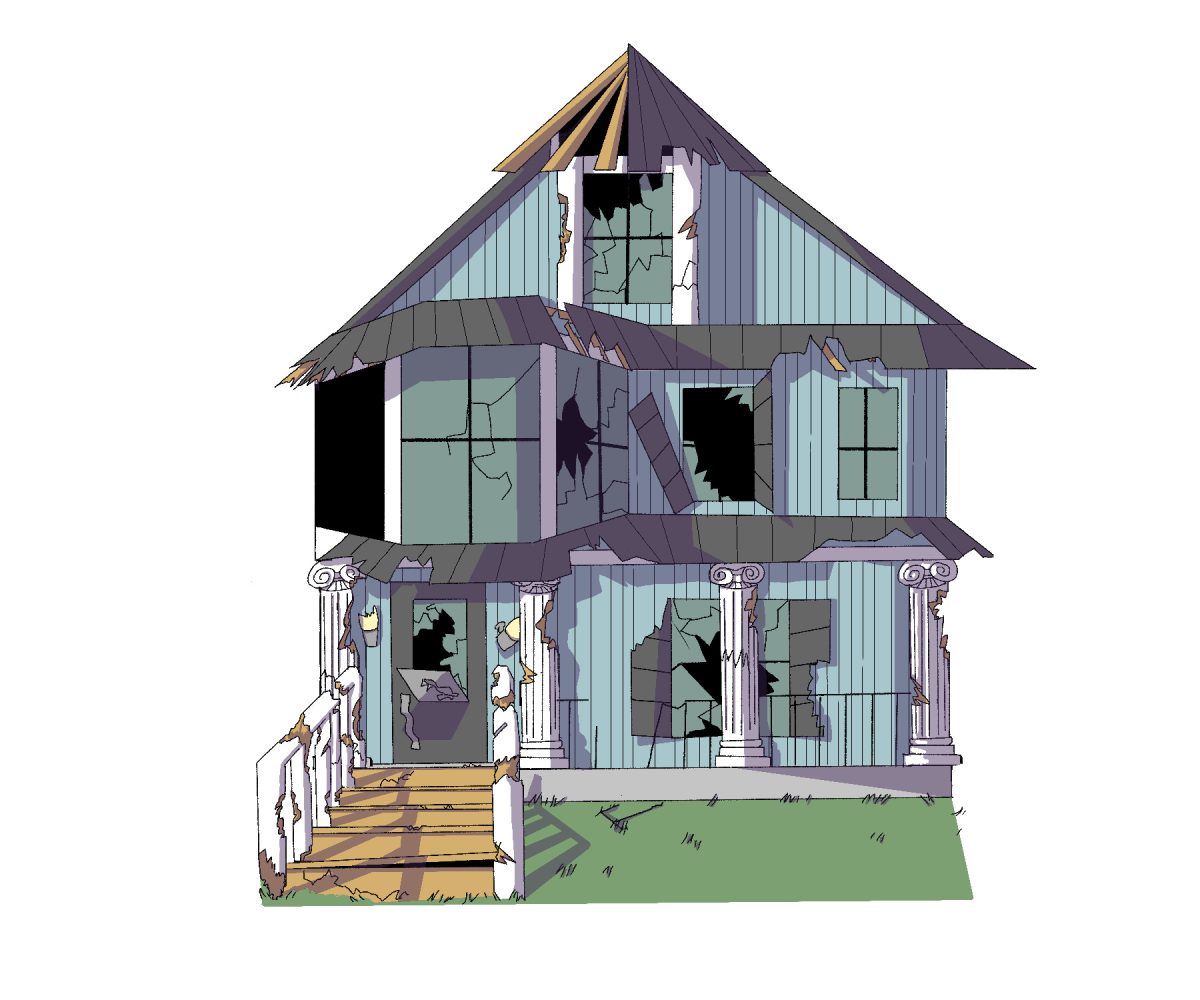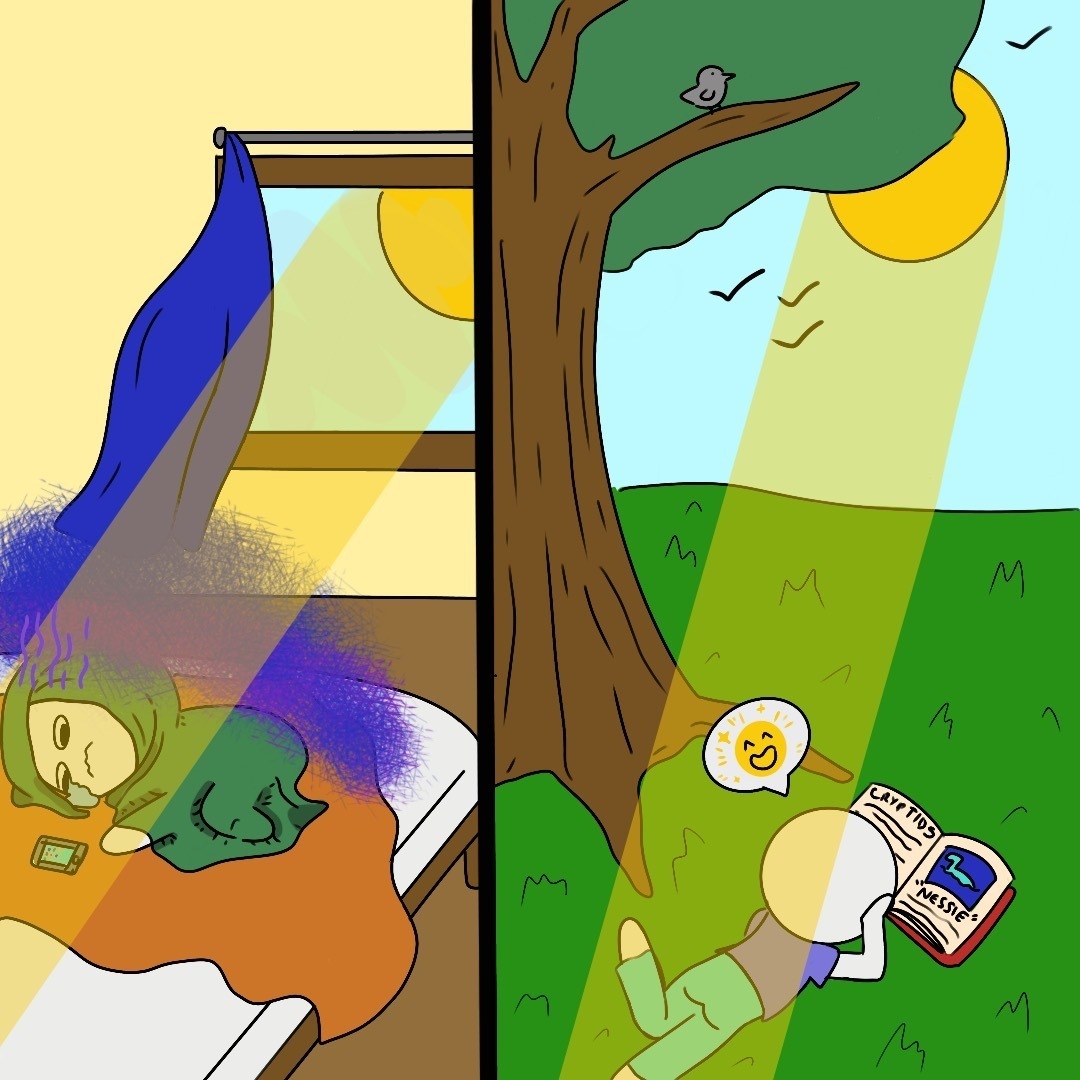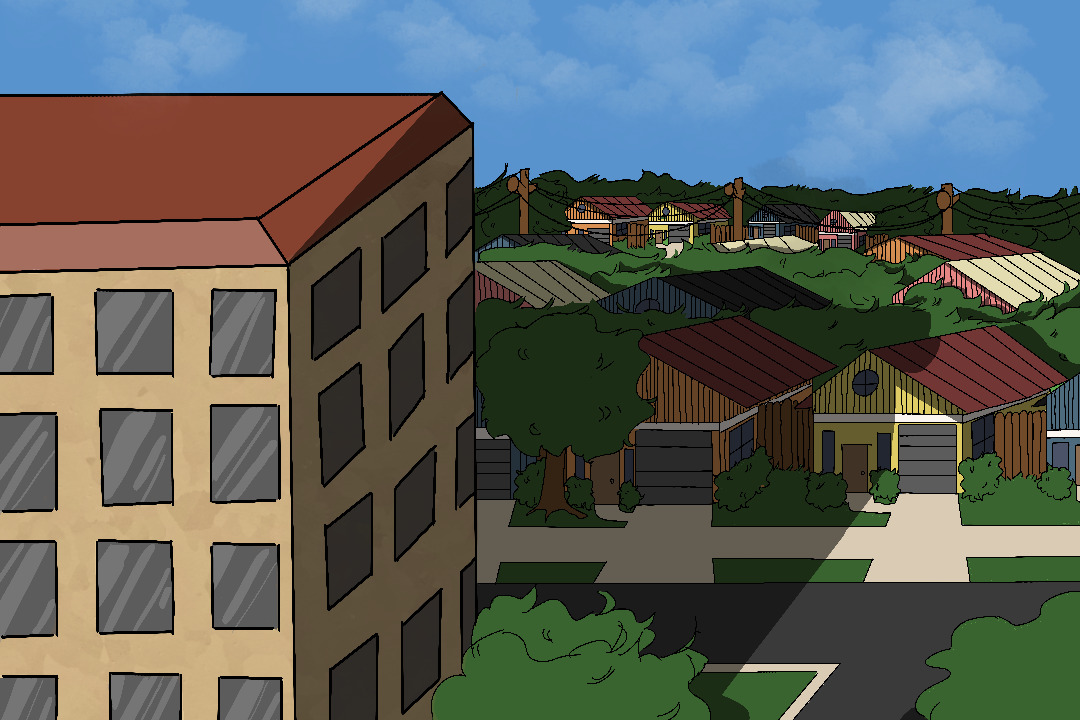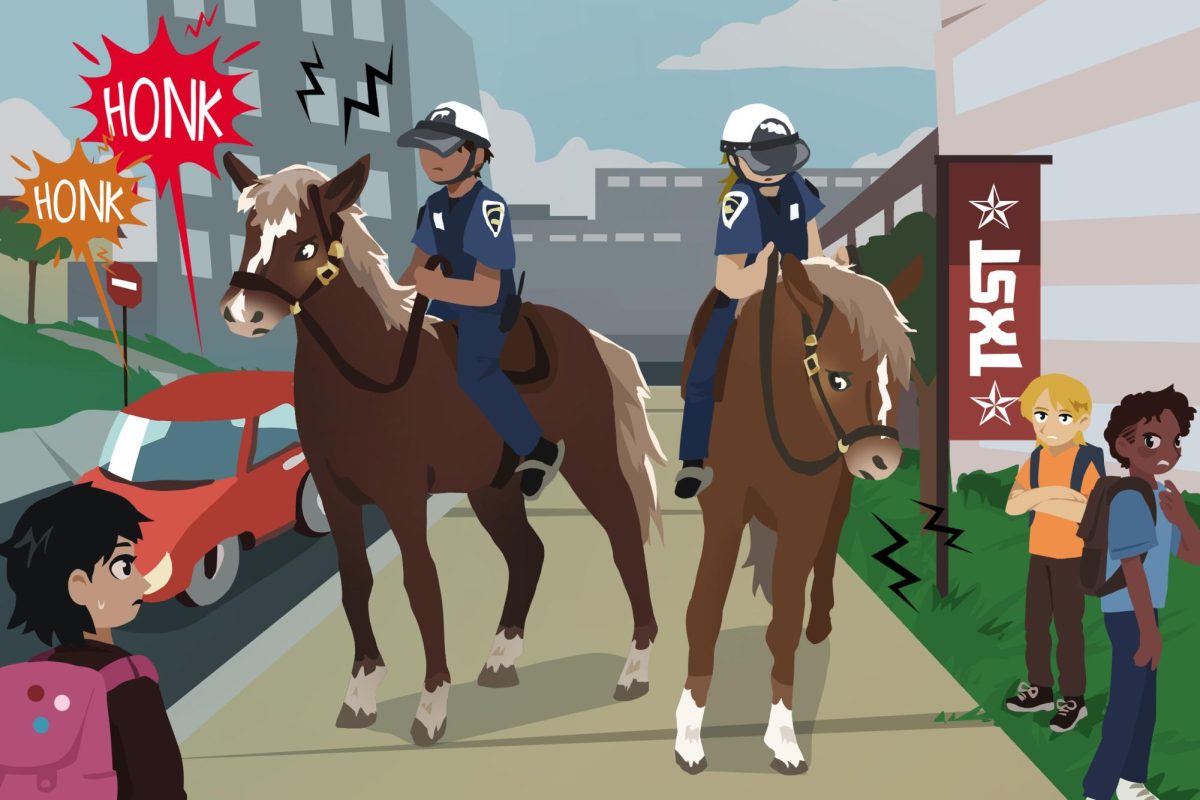In late July, President Denise Trauth sent an email to the university community explaining that the Roadmap to Return prioritizes the health, wellness and safety of students, faculty and staff. However, if any of this were true, Texas State would not house any students on campus this fall.
The Department of Housing and Residential Life has a web page for COVID-19 updates related to student housing, including procedures related to move-in, cleaning and reporting cases of COVID-19. But the majority of the information is self-explanatory and coincides with the health and safety guidelines already recommended by Texas Health and Human Services and Centers for Disease Control and Prevention.
The housing department’s tenacious response to how COVID-19 will affect dorm life is concerning. It cannot protect students living on campus no matter how many guidelines it claims to follow.
DHRL offers a variety of housing options and with that variety comes different prices, sizes and amenities. COVID-19 may pose a severe risk in halls with community bathrooms in dorms like Jackson, Chautauqua, Gaillardia, Angelina and San Gabriel.
Custodial staff will be disinfecting high touch areas in community bathrooms, lobbies, open areas, study rooms, public restrooms and kitchens twice a day. Nevertheless, sanitizing and cleaning high touch areas two to three times will not be enough. There are a lot of rooms and bathrooms with small spaces that may be neglected.
Texas State is a fairly large campus with over a dozen residence halls. There is no guarantee that custodial staff will be able to clean all of these areas in such a short period of time. An example of a very real, possible scenario can be seen at the University of North Carolina at Chapel Hill, which has had four COVID-19 clusters and 135 new cases on campus since classes started last week. The clusters—defined by N.C. Department of Health and Human Services as five or more cases—are at three residence halls.
Expecting custodial staff to clean each bathroom, shower, lobby, study room, etc., twice a day, in such a short period of time might be difficult.
Similar to Texas State, UNC also increased its frequency of cleaning and disinfecting high-touch surfaces multiple times a day. UNC is smaller with 30,101 students while Texas State has more than 38,000. If UNC cannot manage to house students on campus for more than a week, Texas State should recognize it cannot either. The UNC situation has shown how difficult it is to maintain a large group of people’s safety even with extensive safety procedures.
Other halls can house a larger number of residents. For example, Bobcat Village can house up to 652 students, and Blanco can house 594. As a precaution, DHRL eliminated three-person dorms, cutting those rooms down to two-person in each and setting aside isolation rooms in Bobcat Village. But with that, only a total of 56 beds will be lost which is not enough to provide any reassurance.
COVID-19 guidelines will undoubtedly affect the on-campus living experience. New policies, including the requiring of face coverings in all public spaces, curfews, no overnight guests and a limitation of only one guest within an assigned room, will change dorm life significantly.
Regular dorm life consists of hall meetings, game nights and enjoying new experiences with new friends. In halls with Living-Learning Communities, students, under normal circumstances, are required to go to mandatory floor meetings, participate in team-building activities designed to enhance their knowledge of their major and career field and get to know their peers. COVID-19 ruined the possibility of a typical first-year experience, and students will inevitably experience fatigue.
It is not crazy to believe these students will find ways around safety measures implemented by DHRL or ignore them completely. Tik Tok videos across the country have shown students from various universities ignoring protocols, gathering in large groups. Fraternities and sororities in other places have lost all common sense. Texas State cannot protect students in residential halls from themselves no matter how hard it tries.
Part of a residential assistant’s job is to help establish a sense of community within her, his or their residence hall, but it is nearly impossible to build an authentic sense of community while maintaining a six-foot distance.
It is already difficult to be in charge of people around one’s age. RA’s can only do so much to ensure that residents are wearing their masks and social distancing.
With roughly 7,000 students living in residence halls, another foreseeable issue is an uptick in students who test positive for the virus.
According to Texas State’s COVID-19 Dashboard, 113 students and 27 faculty and staff members have already tested positive for COVID-19. If a student becomes sick while living on-campus, Director of Housing and Residential Life Rosanne Proite has already said the department is “not in a position to provide health care on a daily basis in the halls.”
As well-equipped as Texas State wants to believe it is for COVID-19, it is not.
Procedures in the Roadmap to Return are easier said than done. While the procedures and requests Texas State has asked its students to follow may not seem complicated, they will be challenging to enforce.
Texas State asked students to quarantine for 14 days prior to the beginning of the fall semester without acknowledging how many students work in the food and retail industry where social distancing is nearly impossible. The university also has no way of verifying who was able to do so.
The hard reality is that some students may need to reside on campus because they do not have the luxury of choice. In times of uncertainty, those students should be able to live on campus without fear of contracting the virus from their peers who might refuse to take the virus seriously.
Texas State cannot claim to protect students living in residence halls. The institution needs the income on-campus housing provides, but that need might have overshadowed its responsibility to prioritize students’ lives. There are too many negative what-if scenarios that outweigh the monetary benefits of having students live on campus again.
If a student resident dies from COVID-19, it will be Texas State’s fault. The university is using health and safety precautions as a way to justify students being able to live on campus again; instead, it should rethink sending students to live on campus at all.
– Amira Van Leeuwen is a journalism sophomore
The University Star welcomes Letters to the Editor from its readers. All submissions are reviewed and considered by the Editor-in-Chief and Opinion Editor for publication. Not all letters are guaranteed for publication.
Opinion: Texas State cannot protect students in residential halls from COVID-19
August 20, 2020

Michele DuPont
Donate to The University Star
Your donation will support the student journalists of Texas State University. Your contribution will allow us to purchase equipment and cover our annual website hosting costs.



